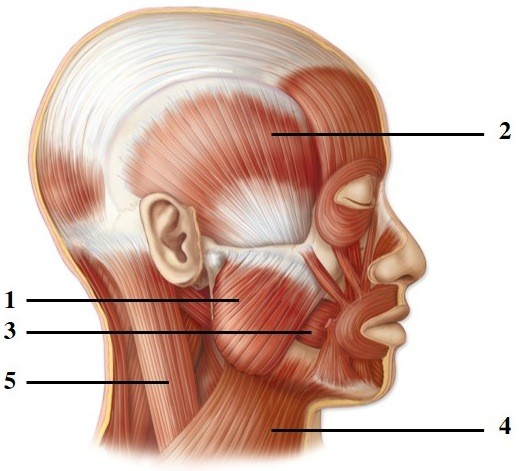Matching
A) B
B) D
C) C
D) A
6) Tidal volume.
7) Inspiratory reserve volume.
8) Residual volume.
9) Expiratory reserve volume.
10) Air that does not participate in the exchange of gases.
6) A 7) D 8) B 9) C 10) B
You might also like to view...
You just ate a huge, delicious breakfast and now are going to head out for your morning run. As you try picking up the pace, you find running to be quite difficult because
A. everywhere in the systemic circuit, blood vessels are constricted. B. stroke volume is decreased. C. your heart rate is too high. D. blood flow to the abdominal organs is dominant. E. your mean arterial pressure is too high.
What term describes the inheritance of a trait which in the heterozygote has an intermediate expression between either allele?
A. Incomplete dominance B. Codominance C. Incomplete penetrance D. Complete dominance
 This figure shows a lateral view of the muscles of facial expression. What muscle does number 3 indicate?
This figure shows a lateral view of the muscles of facial expression. What muscle does number 3 indicate?
A. Sternocleidomastoid B. Temporalis C. Masseter D. Platysma E. Buccinator
________ hormones bind to a receptor on the ________, which releases an enzyme that converts ATP into cAMP.
A. Nonsteroid; nuclear membrane B. Steroid and thyroid; plasma membrane C. Nonsteroid; plasma membrane D. Steroid and thyroid; nuclear membrane